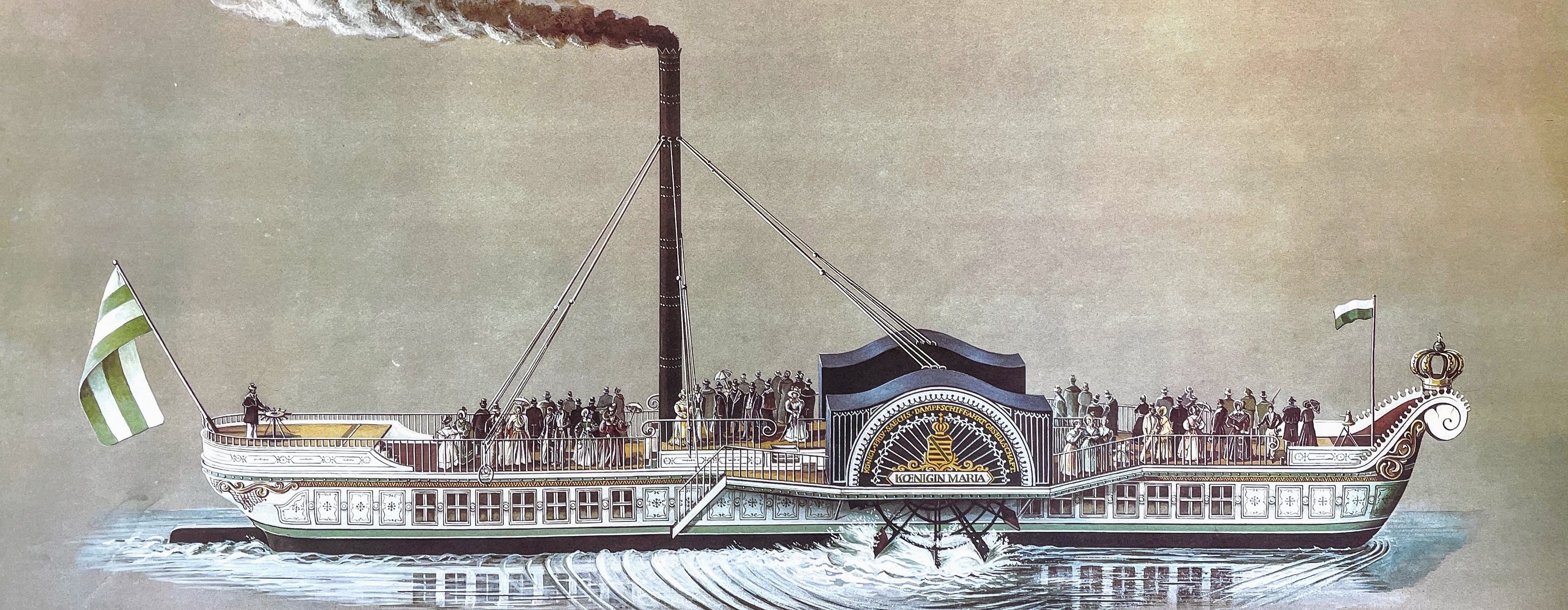
189 years of river cruise experience
and technical fascination
Since 1836, the WEIßE FLOTTE SACHSEN GmbH has uniquely combined river landscape experience and technical fascination. In the almost 190 years since the founding of the Elbdampfschiffahrts-Gesellschaft, the company has undergone many changes and is today, with nine historic paddle steamers the oldest and largest paddle steamer fleet in the world. With the two salon ships “August der Starke” and “Gräfin Cosel” the fleet is completed by modern ships.
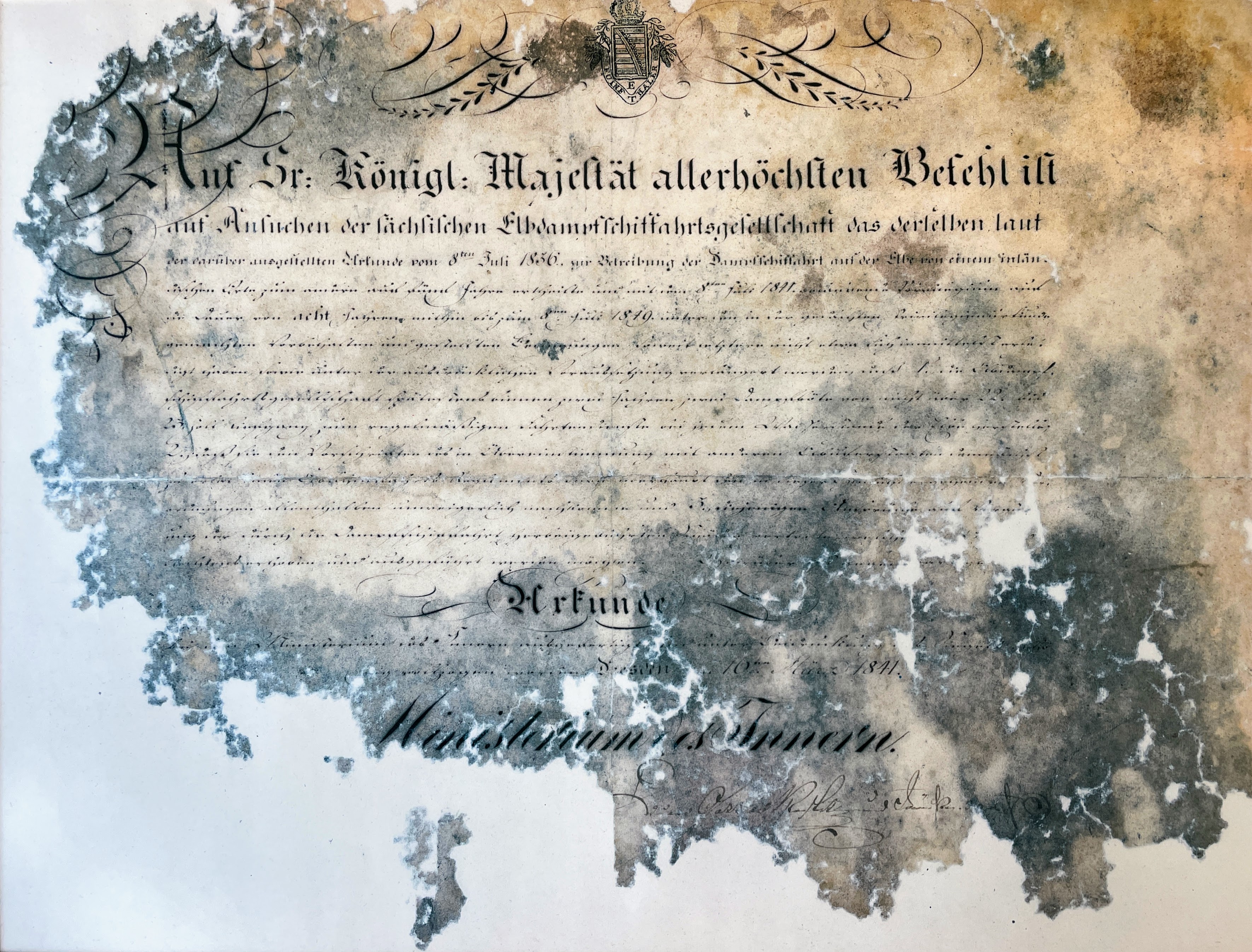
1836 – 1898
How it all started
With the foundation of the Elbdampfschiffahrts-Gesellschaft on July 8th, 1836, the cornerstone of a traditional company was laid. On July 30th, 1837, the Saxon Steamship Company began regular operations with the maiden voyage of the paddle steamer “Königin Maria”. After the company was renamed the Sächsisch-Böhmische Dampfschiffahrts-Gesellschaft (SBDG) in 1867, the oldest steamship still in service today under the name “Stadt Wehlen” was put into service in 1879 with the commissioning of the steamship “Dresden III”. With the construction of the traditional Laubegast shipyard in 1898, the shipyard still used today by the “White Fleet” for all repair work was created.

1910 – 1948
Wartime years and nationalization
Since the then 33 steamships were given their berth on the Terrassenufer in 1910, they have shaped the typical cityscape of Dresden. In July 1926, the steamer “Dresden” is commissioned as the flagship of the fleet. All steamships at this time wore a green and white paint scheme with sand-colored wheel wells. The PD Dresden was the first to be given its bright white dress, which is still common today, and in the spring of 1928 all the other passenger steamers followed suit. – The “White Fleet” was born! In 1936, the “White Fleet” celebrates its 100th anniversary with a grand fleet parade. The white paint of the fleet had to give way to a camouflage paint during the 2nd World War, as the ships were used as military hospitals and for evacuation. With the end of the war in 1945, the steamship fleet shrank to only eight operational vessels. On July 1st 1948, the Sächsisch-Böhmische Dampfschiffahrts-Aktiengesellschaft and its fleet of 16 paddle steamers, which had been repaired after the war, became the state-owned enterprise (VEB) “Elbeschiffahrt Sachsen”.
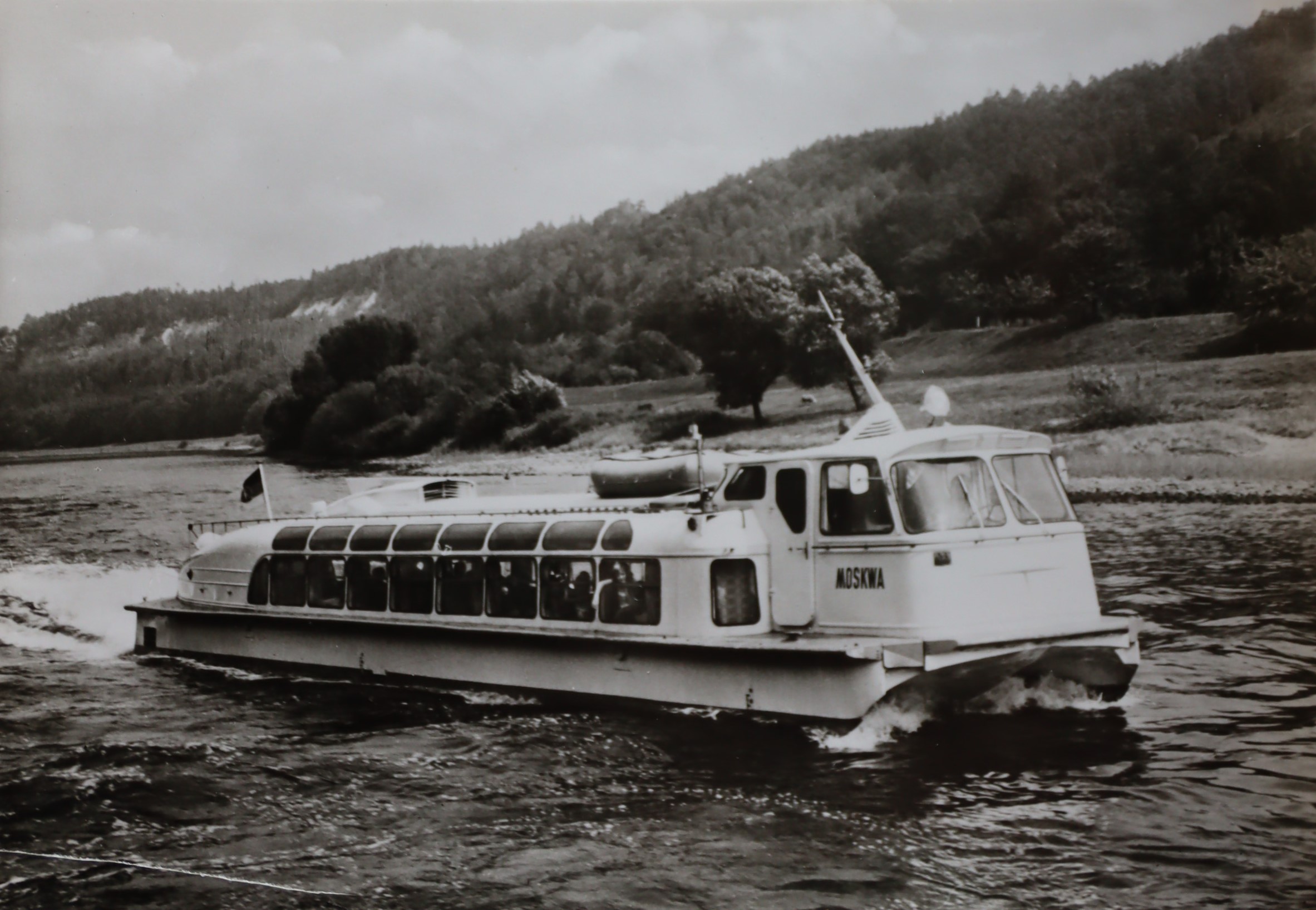
1963 – 1975
The modernization
In 1963 and 1964, four modern diesel-electric side-wheelers from the Roßlau shipyard are put into service. Only one year later, the first trips by travel agency to the CSSR become possible. In 1974/75, the two motor escort boats “NEWA” and “MOSKWA” are put into operation for the fast traffic between Dresden and Bad Schandau.
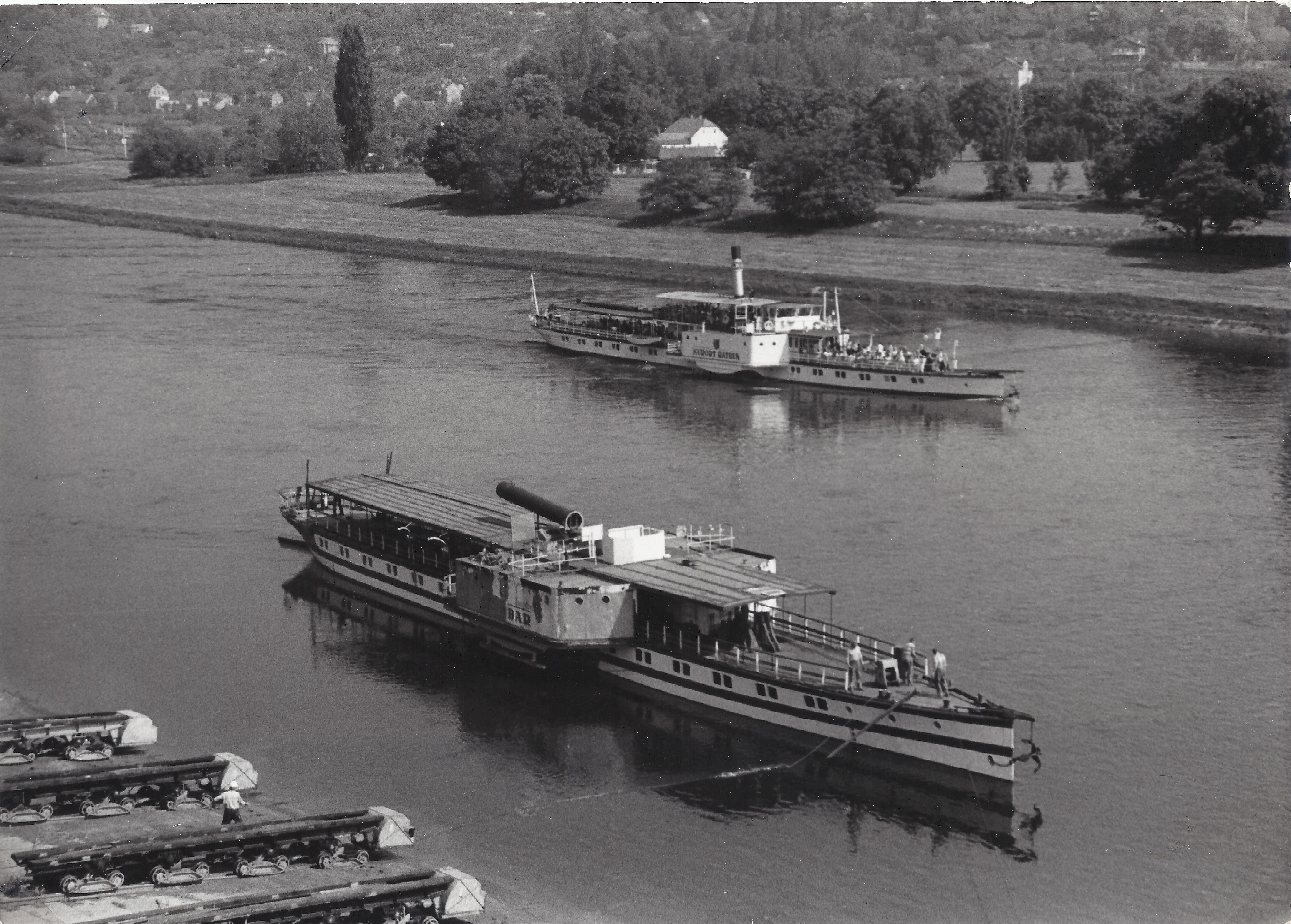
1980 – 1989
A monument in motion
In 1980, the engine of the steamship “Diesbar” was placed under protection as a technical monument, and in 1985 the entire steamship.
On October 7th, 1989 – on the 40th anniversary of the GDR – the PD “Diesbar” was put back into service.
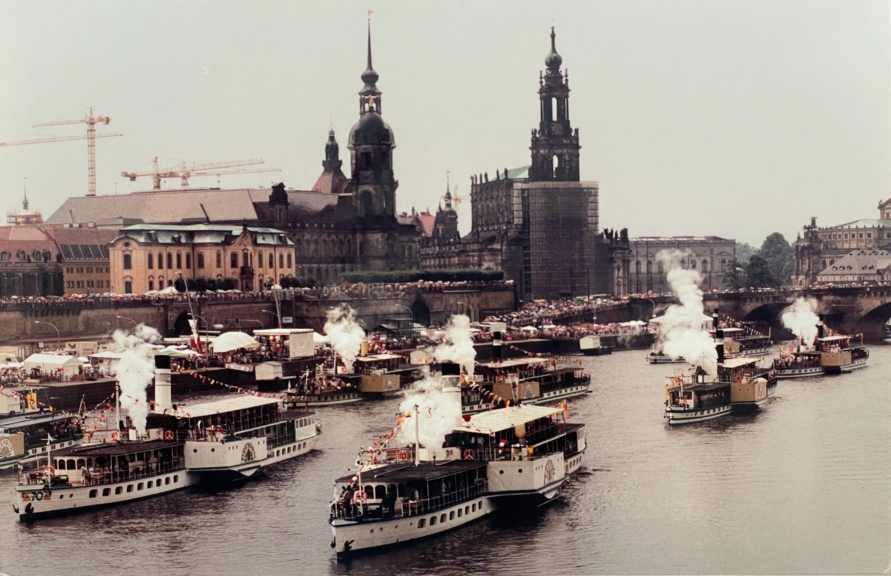
1992 – 2000
The “Pride of Saxony”
In 1992, the company is handed over by the Treuhand to Conti Reederei and from then on operates under the name Sächsische Dampfschiffahrts-GmbH & Co. Conti Elbschiffahrts KG. In December 1999, the PD “Krippen” was repurchased from the Meissner Dampfschiff Reederei Junghans & Steuer GmbH and was put back into service in August 2000 as the ninth steamer in the fleet. Until 1994, eight steamers underwent extensive refurbishment at a cost of about DM 26 million, combined with reconstruction in the historic style at the Laubegast shipyard. Even today, the paddle steamers and saloon ships of the “White Fleet” are maintained and repaired on site. Two modern newbuildings, the sister salon ships “Gräfin Cosel” and “August der Starke”, as well as two more motor ships completed from now on the “Pride of Saxony” – the oldest paddle steamer fleet in the world.
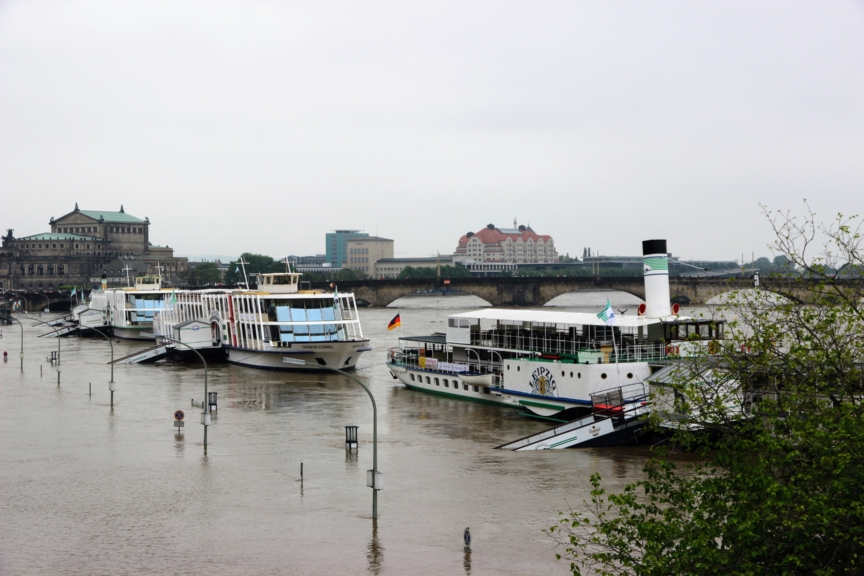
2002 – 2018
Periods of High and Low Water
The devastating flood of the century in Dresden, from the 10th -31st Aug. 2002, with maximum water levels of 9.40 m, forced the suspension of navigation for several weeks. Fortunately, there were no ship losses. The flood of the century was followed in 2003 by weeks of low water, during which the water level in Dresden fell below 80 cm, resulting in numerous losses of scheduled, special and charter services. About eleven years later, in June 2013, there was another devastating flood, with a peak water level of 8.76 m, which again forced the Saxon Steam Navigation to take a 16-day break. In 2018, extremely low water occurred due to prolonged dry periods. The lack of water considerably restricted shipping on the Elbe and made it impossible at times. In early September 2018, the minimum level of 45cm was measured at the Augustus Bridge.

2020
On to new shores
The backlogs of recent low water years and Corona pandemic-related failures could not be made up. Sächsische Dampfschifffahrt filed for insolvency in June 2020. In the subsequent bidding process, Basel-based UNITED RIVERS AG came out on top. On September 1st, 2020, she took over the helm of the company, which from then on was known as “WEIßE FLOTTE SACHSEN GmbH”.
